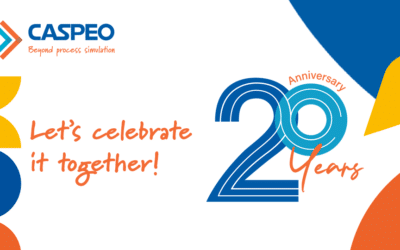Metal accounting – AMIRA code principles
Metal accounting estimates the quantity of saleable metals produced over a defined period of time (Morrison, 2008a). The AMIRA P754 code of practice for metal accounting defines metal accounting best practices. What metal accounting is all about? What are the challenges? Learn how implement a successful metal accounting system following the AMIRA P754 principles.
What is metal accounting ?
Why implement a metallurgical system?
A metallurgical accounting system is widely used to quantify the performances of production plants and to estimate as accurately as possible the metal inventory. It is designed to:
- Enhance corporate governance and decision making,
- Improve auditability and transparency of metal accounting and reporting process,
- Optimize overall plant efficiency and profitability from mine-to-product,
- Increase performance measurement and minimize risk,
- Improve process control: effluent gas emissions, loss and theft detection…
The starting point of an efficient metal accounting system is a precise understanding of the process operations. It should rely on an accurate sampling and measurement system. It is common to say about metal accounting software that if bad data are sent in the software, inaccurate results will be obtained, often summarized as: “Garbage in, garbage out”.

Need to gain skills on metallurgical accounting?
If you want to learn methods to improve the accuracy of your metal balances and how to implement a metallurgical accounting system, this course is for your. A 100% online course by experts to start learning whenever and wherever you are!
The 10 metal accounting main principles
In 2005, the AMIRA P754 project established a code of best practice for implementing efficient and reliable metal accounting systems. Metal accounting system must comply with this code.
The recommendations of the P754 Amira code can be summarized in ten main principles that INVENTEO, CASPEO metallurgical accounting solution, allows or helps to apply.
The application of the AMIRA code is not only linked to the use of given software whatever qualities it may get or functionalities it may provide. The software package will facilitate to reach the code recommendation but is not sufficient.
1. The metal accounting system must be based on accurate measurements of mass and metal content. It must be based on a full Check in-Check out system using the Best Practices as defined in this Code, to produce an on-going metal/commodity balance for the operation. The system must be integrated with management information systems, providing a one-way transfer of information to these systems as required.
2. The system must be consistent and transparent and the source of all input data to the system must be clear and understood by all users of the system. The design and specification of the system must incorporate the outcomes of a risk assessment of all aspects of the metal accounting process.
3. The accounting procedures must be well documented and user friendly for easy application by plant personnel, to avoid the system becoming dependent on one person, and must incorporate clear controls and audit trails. Calculation procedures must be in line with the requirements set out in this Code and consistent at all times with clear rules for handling the data.
4. The system must be subject to regular internal and external audits and reviews as specified in the relevant sections of the Code to ensure compliance with all aspects of the defined procedures. These reviews must include assessments of the associated risks and recommendations for their mitigation, when the agreed risk is exceeded.
5. Accounting results must be made available timeously, to meet operational reporting needs, including the provision of information for other management information systems, and to facilitate corrective action or investigation. A detailed report must be issued on each investigation, together with management’s response to rectify the problem. When completed, the plan and resulting action must be signed-off by the Competent Person.
6. Where provisional data has to be used to meet reporting deadlines, such as at month ends when analytical turn-around times could prevent the prompt issuing of the monthly report, clear procedures and levels of authorisation for the subsequent replacement of the provisional data with actual data must be defined. Where rogue data is detected, such as incorrect data transfer or identified malfunction of equipment, the procedures to be followed together with the levels of authorisation must be in place
7. The system must generate sufficient data to allow for data verification, the handling of metal/commodity transfers, the reconciliation of metal/commodity balances, and the measurement of accuracies and error detection, which should not show any consistent bias. Measurement and computational procedures must be free of a defined critical level of bias.
8. Target accuracies for the mass measurements and the sampling and analyses must be identified for each input and output stream used for accounting purposes. The actual accuracies for metal recoveries, based on the actual accuracies, as determined by statistical analysis of the raw data, achieved over a company’s reporting period must be stated in the report to the Company’s Audit Committee. Should these show a bias that the Company considers material to its results, the fact must be reported to shareholders.
9. In-process inventory figures must be verified by physical stock-takes at prescribed intervals, at least annually, and procedures and authority levels for stock adjustments and the treatment of unaccounted losses or gains must be clearly defined.
10. The metal accounting system must ensure that every effort is made to identify any bias that may occur, as rapidly as possible and eliminate or reduce to an acceptable level the source of bias from all measurement, sampling and analytical procedures, when the source is identified.
Ensure compliance to AMIRA with INVENTEO metal accounting solution
Discover how INVENTEO could help you to implement a reliable and efficient metallurgical accounting following AMIRA code principles. INVENTEO is the only packaged solution delivering software, full audits, consulting and training services.
Recent posts
CASPEO is proud to announce the launch of CASPEO DAYS 2024, a conference dedicated to exploring the future of mining
CASPEO DAYS 2024 will explore the pivotal role of data reconciliation. It will be focused on the data quality and how to achieve it… On the Path Towards Intelligent Mining!
CASPEO celebrates its 20th anniversary in 2024
This year, CASPEO is celebrating its 20th anniversary, marking two incredible decades of innovation, growth, and success in the mining industry. A celebration marked by a conference "On the path...
Master II Internship – Modeling of hydrometallurgical operations: solvent extraction
CASPEO develops and distributes the USIM PAC software, a static process simulator for the design and optimization of mineral processing and hydrometallurgical plants. Hydrometallurgical operations...
Subscribe to our newsletter
Ready to talk about your project?
Question about your process, our process simulation software or services? Write us here to be in touch.
CASPEO provides trusted process design and optimization services and simulation software to engineers dealing with solids and all types of raw materials. With CASPEO, go beyond process simulation.
Stay tuned!
Empower your decisions
Consulting
Engineering software
Get a quote
Develop your skills
Blog
Get a live demo
Need assistance?
On-line support
Contact us
2024 © CASPEO - All rights reserved




